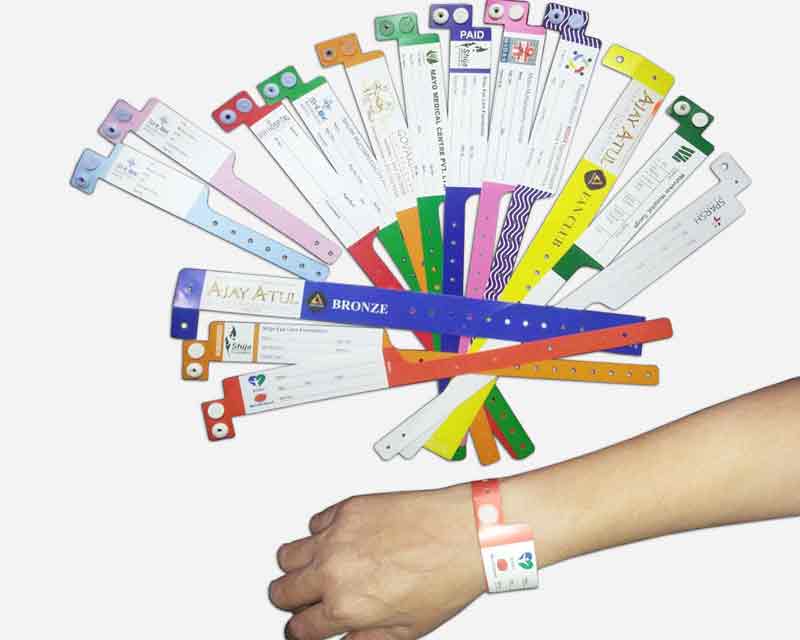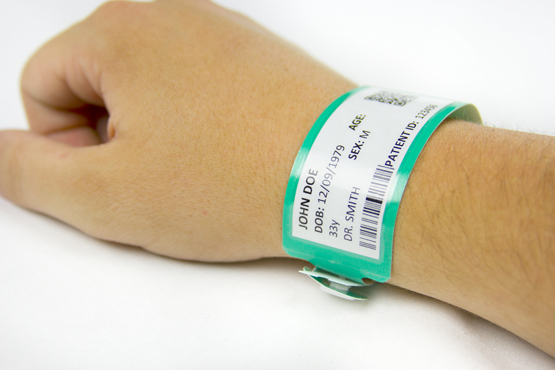Choosing the Right Substances for Your Patient Identification Band: A Step-by-Step Guide
Choosing the Right Substances for Your Patient Identification Band: A Step-by-Step Guide
Blog Article
Discovering the Various Kinds of Patient Identification Band Made Use Of in Medical Facilities
In the intricate world of health care, the critical role of Patient Identification bands typically goes undetected. These bands, varying from straightforward paper wristbands to innovative RFID bands, create the backbone of Patient safety methods, ensuring precision in Patient Identification. The vast diversity of these bands, each with its distinct advantages and restrictions, is often overlooked. As we browse with this subject, one might obtain insight right into the subtle complexities and vital relevance of such bands in medical facilities.
Understanding the Significance of Patient Identification Bands
While they may appear like plain accessories, Patient Identification bands play an important function in clinical facilities. These bands serve as an important tool for confirming Patient identity, protecting against medical mistakes connected to misidentification. Patient Identification bands also aid in streamlining administrative jobs, making certain exact record-keeping and invoicing.
Conventional Paper Wristbands: Their Use and Limitations
Traditional paper wristbands have actually been a staple in Patient Identification throughout different clinical centers. While their usage prevails, they harbor specific restrictions that may impact their performance in Patient monitoring. This section will focus on the range of their application and the fundamental drawbacks connected with their usage.
Paper Wristbands: Usage Range
In the realm of Patient Identification, paper wristbands have long held a crucial duty. These bands are generally used in outpatient setups, where the Patient's remain is momentary. The wristbands include important information such as the Patient's name, date of birth, and an one-of-a-kind Identification number. This simple, yet efficient system, enables clinical professionals to swiftly and accurately identify clients, guaranteeing the proper treatment is carried out. Paper wristbands are likewise utilized in emergency circumstances, where rapid Identification is paramount. Their use expands to occasions like blood donation drives and mass inoculation programs, even more stressing their convenience. Despite innovations in technology, the modest paper wristband continues to be a reputable and cost-effective solution for Patient Identification in different healthcare situations.
Limitations of Paper Wristbands
In spite of their widespread use, paper wristbands are not without their drawbacks. Their physical toughness is just one of the significant restrictions. Direct exposure to water, sweat, or rough handling can make them unreadable or even trigger them to disintegrate. In enhancement, paper wristbands typically lack the technical abilities of more contemporary choices, such as barcoding or RFID chips, restricting their functionality to merely displaying composed details. The failure to update or change the data on the wristband is an additional shortcoming. If the info is transcribed, readability can be endangered, leading to prospective misidentification. Paper wristbands can trigger pain or skin irritation to some individuals, particularly when worn for extended periods.
Barcoded Wristbands: Innovations in Patient Identification
While Patient Identification has actually long been an important aspect of health care, the development of barcoded wristbands signifies a considerable leap onward. These bands leverage the simpleness of barcoding innovation, permitting for Patient details to be quickly checked and accessed. They enhance the rate and accuracy of Patient Identification, reducing the threat of clinical errors connected to misidentification. Barcoded wristbands are cost-efficient, very easy to produce, and remove handwriting errors common with manual systems. Nonetheless, they are not without constraints. While they supply enhancements over conventional bands, the barcode can become used or smudged, making it unreadable. Despite this, barcoded wristbands continue to be a vital tool in modern-day healthcare settings, symbolizing the intersection of technology and Patient treatment.
Radio Frequency Identification (RFID) Bands: an Action Towards Futuristic Healthcare
The advancement of Patient Identification bands has actually produced the introduction of Radio Frequency Identification (RFID) Bands (patient identification band). These ingenious gadgets existing vital benefits for health care centers, providing an extra reliable and technically advanced methods of Patient Identification. The implementation of RFID in health care is a substantial step in the direction of a more advanced technique to Patient administration and safety
Comprehending RFID Bands

RFID Bands: Trick Advantages
Embracing a future where innovation and health care combine, superhigh frequency Identification bands use numerous crucial benefits. Primarily, these bands improve Patient security by giving precise, instantaneous Identification, thus minimizing medical errors. RFID bands can store a large quantity of Patient information, consisting of case history and allergic reactions, enabling individualized care. They also improve administrative tasks, as the automated information entrance replaces hands-on procedures, enhancing effectiveness and decreasing paperwork. In addition, RFID bands use real-time tracking of clients, vital in high-risk atmospheres such as surgical procedure or extensive care. These bands are resistant and durable to ecological factors, ensuring regular capability. Generally, RFID bands represent a significant improvement in Patient Identification innovation, profiting both clients and doctor.
Implementing RFID in Health Care
These bands give a smooth way to track and determine patients, guaranteeing their security and enhancing effectiveness in therapy procedures. RFID bands decrease medical errors by supplying precise Patient Identification, which is essential in avoiding misdiagnosis or incorrect medication administration. Hence, the execution of RFID bands is a substantial action in the direction of improving Patient safety and healthcare shipment.

Color-Coded Wristbands: Aiding in Quick and Accurate Diagnosis
In the dynamic environment of a clinical facility, color-coded wristbands have actually arised as important tools for swift and exact Identification of a patient's clinical problem. These wristbands, worn by individuals, carry click for more specific colors that represent different clinical problems or standings. Red might suggest allergic reaction dangers, while yellow could symbolize a loss threat. This system is developed to offer instant visual hints to doctor, improving Patient security and care quality. In emergency situation scenarios, using these wristbands permits rapid decision-making. Nonetheless, the effectiveness of color-coded wristbands depends upon the uniformity of shade interpretation across healthcare establishments, requiring common requirements for regular application.
Strategies for Efficient Execution and Management of Patient ID Bands
Achieving optimal usage of Patient Identification bands necessitates a well-structured method for their implementation and monitoring. Patient education is also crucial; individuals need to recognize the function of the bands and the demand for their constant wear. It's important to have a back-up strategy in location, such as barcode scanning or biometrics, to ensure that Patient Identification is never endangered.
Final thought
Patient Identification bands are crucial in clinical facilities to make sure safety and precision. Traditional paper, barcoded, RFID, and color-coded wristbands each hold special advantages, ranging from cost-effectiveness to innovative data storage space and instant clinical notifies. Effective application and management of these bands can substantially reduce clinical errors, enhance efficiency, and boost overall Patient care. Hence, understanding and utilizing these Identification tools is read here vital for maintaining high requirements in healthcare.
These bands, varying from basic paper wristbands to advanced RFID bands, develop the backbone of Patient safety and security procedures, guaranteeing accuracy in Patient Identification.The evolution of Patient Identification bands has brought concerning the introduction of Radio Frequency Identification (RFID) Bands. On the whole, RFID bands stand for a significant advancement in Patient Identification technology, profiting both individuals and health care providers.
RFID bands reduce medical errors by providing accurate Patient Identification, which is critical in preventing misdiagnosis or incorrect medicine management. Patient education is additionally essential; clients should recognize the purpose of the bands and the demand for their constant wear.
Report this page